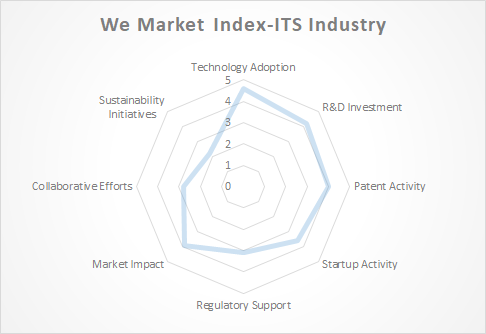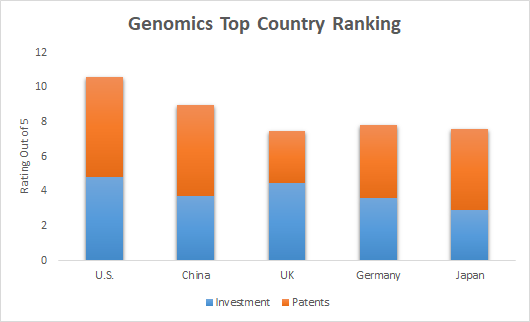Key Trends in the US Healthcare Market: What's Driving Change?
The US
healthcare market is a dynamic and evolving landscape influenced by various
trends and factors. As the industry adapts to technological advancements,
policy changes, and shifting consumer preferences, it's crucial to understand
what’s driving these changes. In this article, we will explore the key trends
reshaping the US healthcare market and the forces driving these changes.
Technological
Advancements
One of
the most significant trends in the healthcare market is the rapid advancement
of technology. Telemedicine, artificial intelligence (AI), and wearable health
devices are transforming how healthcare is delivered and experienced.
Telemedicine
and Digital Health
The
main shifts in the healthcare market is the rapid adoption of telemedicine and
digital health solutions. The COVID-19 pandemic acted as a catalyst,
accelerating the integration of virtual care into mainstream healthcare.
Telemedicine offers convenience, reduces the burden on healthcare facilities,
and enhances access to care for remote and underserved populations. In the digital health market,
use of health tools, including mobile health apps and wearable devices, are
empowering patients to manage their health proactively, track vital signs, and
receive timely interventions.
Value-Based
Care Models
The
healthcare market in the USA is steadily moving away from fee-for-service
models toward value-based care. This approach focuses on patient outcomes and
incentivizes providers to deliver high-quality, cost-effective care.
Value-based care aims to reduce unnecessary medical procedures, enhance patient
satisfaction, and lower healthcare costs. Programs such as Accountable Care
Organizations (ACOs) and bundled payment models are at the forefront of this
shift, promoting collaboration among healthcare providers to improve patient
outcomes.
Artificial
Intelligence and Machine Learning
Artificial
intelligence (AI) and machine learning (ML) are revolutionizing the healthcare
market by enhancing diagnostic accuracy, predicting patient outcomes, and
personalizing treatment plans. AI-powered tools are being used to analyze
medical images, detect patterns in large datasets, and provide clinical
decision support. For instance, AI algorithms can identify early signs of
diseases such as cancer and cardiovascular conditions, enabling timely and
precise interventions. The integration of AI into electronic health records
(EHRs) is also streamlining administrative tasks, allowing healthcare
professionals to focus more on patient care.
Rising
Healthcare Costs
Healthcare
costs in the USA continue to rise, prompting consumers to take a more active
role in their healthcare decisions. Patients are increasingly seeking
transparency in pricing, quality of care, and outcomes. This trend towards
healthcare consumers is driving providers to adopt more patient-centric
approaches and offer competitive pricing. Additionally, the rise of
high-deductible health plans (HDHPs) is encouraging consumers to shop around
for the best value, further fueling this shift.
Population
Health Management
Population
health management is becoming a key strategy in the US healthcare market. This
approach focuses on improving the health outcomes of entire populations by
addressing social determinants of health, promoting preventive care, and
managing chronic conditions. Healthcare providers are leveraging data analytics
to identify at-risk populations, monitor health trends, and develop targeted
interventions. By adopting a holistic view of health, population health
management aims to reduce disparities and improve the overall well-being of
communities.
6.
Pharmaceutical Innovation and Personalized Medicine
The
pharmaceutical industry is witnessing rapid advancements, particularly in the
field of personalized medicine. Personalized medicine tailors treatments to
individual genetic profiles, leading to more effective and targeted therapies.
Innovations in genomics,
biotechnology, and drug development are enabling the creation of precision
medicines that can treat complex diseases with higher efficacy and fewer side
effects. This trend is not only improving patient outcomes but also driving
significant growth in the healthcare market.
7.
Regulatory and Policy Changes
Regulatory
and policy changes continue to shape the healthcare market in the USA.
Initiatives aimed at increasing healthcare access, affordability, and quality
are at the forefront of these changes. The Affordable Care Act (ACA) remains a
pivotal piece of legislation, influencing insurance coverage and healthcare
delivery. Additionally, regulatory frameworks around telemedicine, data
privacy, and pharmaceutical approvals are evolving to keep pace with
technological advancements and changing market dynamics.
8.
Mental Health and Holistic Care
There is a growing recognition of the importance of mental health and holistic care in the healthcare market. The stigma around mental health is decreasing, leading to increased demand for mental health services. Integrating mental health care with primary care is becoming more common, ensuring that patients receive comprehensive and coordinated care. Holistic approaches that consider physical, mental, and social well-being are gaining traction, promoting a more balanced and patient-centered approach to health.
Conclusion
The US
healthcare market is undergoing significant changes driven by technological
advancements, policy and regulatory shifts, changing consumer preferences,
economic factors, and market consolidation. Understanding these trends is
essential for stakeholders, including healthcare providers, policymakers, and
consumers, to navigate the evolving landscape effectively. As the market
continues to transform, staying informed and adaptable will be key to
leveraging opportunities and addressing challenges in the healthcare industry.
For
more information regarding the healthcare market and detailed analysis, read or
visit our healthcare and life science market research reports here.




